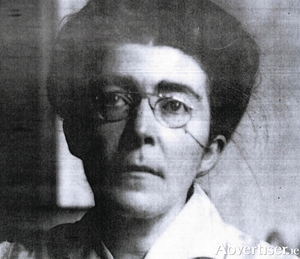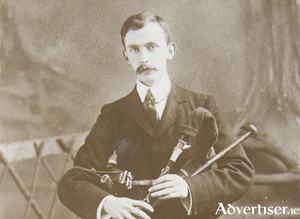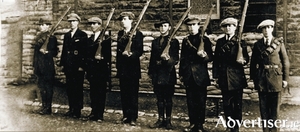Search Results for 'Galway City Museum'
247 results found.
The woman who threw a hatchet at the prime minister

There was hardly a marriage of two minds greater than that between Hanna Sheehy and Francis Skeffington, who were married in Dublin in 1903, and who committed their lives to many causes, particularly feminism, pacifism, socialism, and nationalism. Hanna was one of the founders of the Irish Women’s Franchise League, determined to win votes for women. As part of its disobedience campaign, women were urged not to fill in the 1911 Census form correctly. Her husband Francis, totally supportive in all her endeavours, and as head of the household, submitted the following:
Mná 2016 - women of the revolution

WOMEN'S STORIES from 1916 to 2016, and their dedication to freedom, equality, and fairness, will be told in a new exhibition opening at 5.30pm, Friday May 27, in the Galway City Museum.
The Galway Sessions 2016 - Remembering Eamonn Ceannt

EAMONN CEANNT - Galwayman, traditional musician, Republican leader, signatory of the 1916 Proclamation - will be commemorated and celebrated as part of The Galway Sessions 2016 festival.
Poet Steve Luttrell - the Maine man

THE AMERICAN poet and editor Steve Luttrell's first visit to Ireland will see him read at the Over The Edge Writers Gathering at Galway City Museum on Friday May 13 at 8pm, along with local poets Stephen Byrne and Eileen Ní Shuilleabháin.
Connacht Rugby

The first team to represent Connacht in rugby played against Leinster on December 8 1885. At that time, the game in the west was played by just a few schools. In the city, it was really only UCG and the Grammar School who played with any regularity. By the beginning of the last century the Jes, the Bish, and St Mary’s were competing. The growth of the game was interrupted by World War I and by the War of Independence, but it improved a lot after the truce.
Exhibition to explore Galway's revolution

OUTSIDE OF Dublin, County Galway saw the most significant action of the 1916 Rising, and Galway's role in 1916, as well as the War of Independence and the Civil War, will be examined in a major new exhibition.
George Nicolls, c1887-1942

George Nicolls (Seoirse Mac Niocall) was born in Dublin but his professional career brought him to Galway town, where he worked as a solicitor and coroner for the West Riding District of the county. A committed nationalist, he became involved with Sinn Féin in 1907 and also served as president of the county board of the GAA. Nicolls was the IRB Centre for Galway town. On November 31 1913, he presided over a meeting in the Town Hall, for the purpose of formally establishing the Irish Volunteers in the county, and subsequently chaired the ‘monster public meeting’ in the Town Hall on December 10, at which 600 individuals signed up for the Volunteers. Nicolls also established a pipe band (Cumann Píobairí na Gaillimhe), where all but three were IRB members. It toured the county, playing at events such as GAA matches and concerts, which provided opportunities to recruit new members.
Open air screening of major 1916 documentary tonight

This evening (Wednesday Mar 16), from 7pm, 1916 The Rebellion, a major documentary on the seismic events of Easter Week a century ago, narrated by Liam Neeson, will be shown on a outdoor screen at the Galway City Museum, Spanish Arch.
Republican prisoners in the Town Hall
This remarkable photograph was taken in 1920/21. It shows a group of republican prisoners who are being held in the Town Hall. They are surrounded by barbed wire and are being carefully watched by a soldier you can see standing beside the tin hut. He is wearing a ‘Brodie’ helmet which was a steel combat helmet invented by Englishman John Brodie during World War I. There were probably more soldiers on duty inside the hut watching the detainees, the photographer, and anyone else who might have been was passing. A notice on one of the windows reads “No one is allowed within ten yards of this building.”


